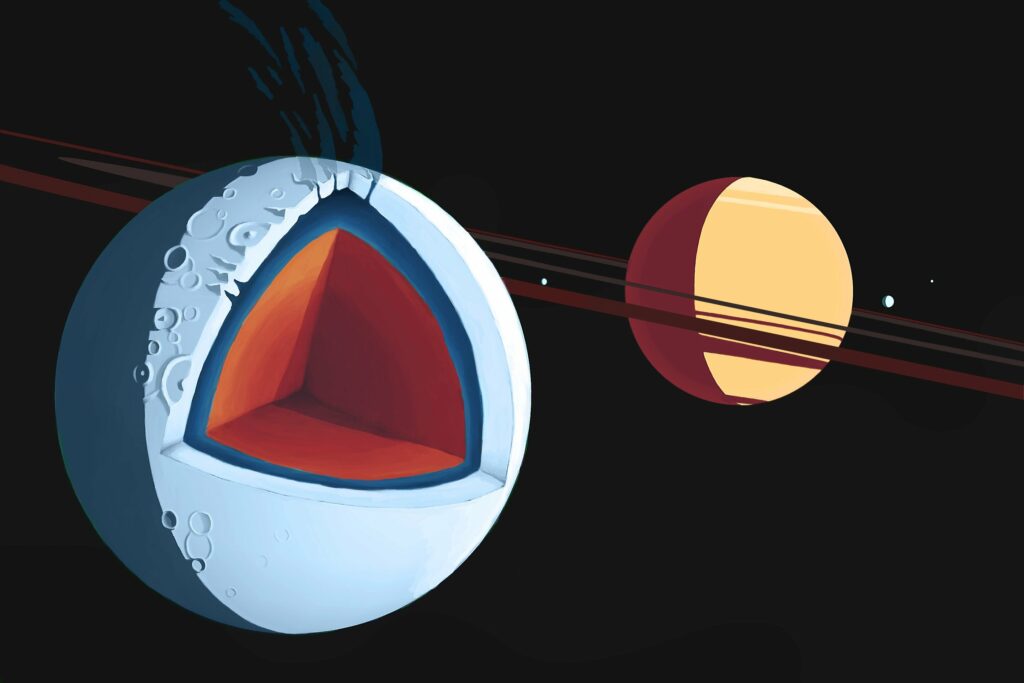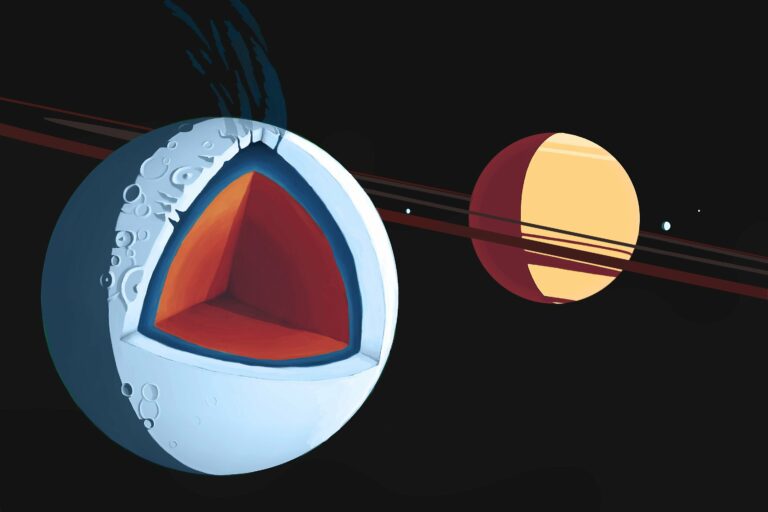Astronomers Discover Equation Describing Subsurface Oceans in Exomoons.
The quest for extraterrestrial life has primarily focused on planets located at a distance from their star, where conditions for liquid water on the surface are possible. However, within our own Solar System, it appears that most of the liquid water exists outside of this zone. Moons orbiting cold gas giants, due to tidal forces, experience enough heat to surpass the melting point. Therefore, if we also take into account moons, the search area for potential life in other planetary systems expands. Researchers from SRON and RUG have recently developed a formula that allows for the calculation of the presence and depth of subsurface oceans in these ‘exomoons.’
Lead author Jesper Tjoa states that, based on the most commonly accepted definition, our Solar System consists of two planets, Earth and Mars, with a habitable surface. Additionally, there are approximately eight moons within our Solar System that potentially have habitable conditions beneath their surfaces. Tjoa suggests that if we expand this definition to include other planetary systems, there could be four times as many habitable exomoons as there are exoplanets.

Taking this into consideration, Tjoa, along with his supervisors Floris van der Tak and Migo Mueller, has developed a formula that establishes a minimum depth for oceans on these moons. This formula takes into account various factors such as the moon’s diameter, distance from the planet, thickness of the gravel layer on the surface, and the thermal conductivity of the ice or soil layer below. While the first two factors can be measured, the latter two need to be estimated based on our knowledge of our own Solar System.
Although it is more challenging to search for underground life compared to surface life, there is hope for obtaining clues in the near future. Tjoa explains that observational astronomers study the light emitted by stars that passes through the atmospheres of exoplanets. By analyzing this light, they can potentially identify the presence of oxygen, for example. In the future, when telescopes are pointed towards exomoons, astronomers may observe geysers similar to those on Enceladus, which could indicate the existence of subsurface oceans. This method could potentially allow us to detect signs of life.
This article is republished from PhysORG under a Creative Commons license. Read the original article.
Do not forget to share your opinion with us to provide you with the best posts !




0 Comments